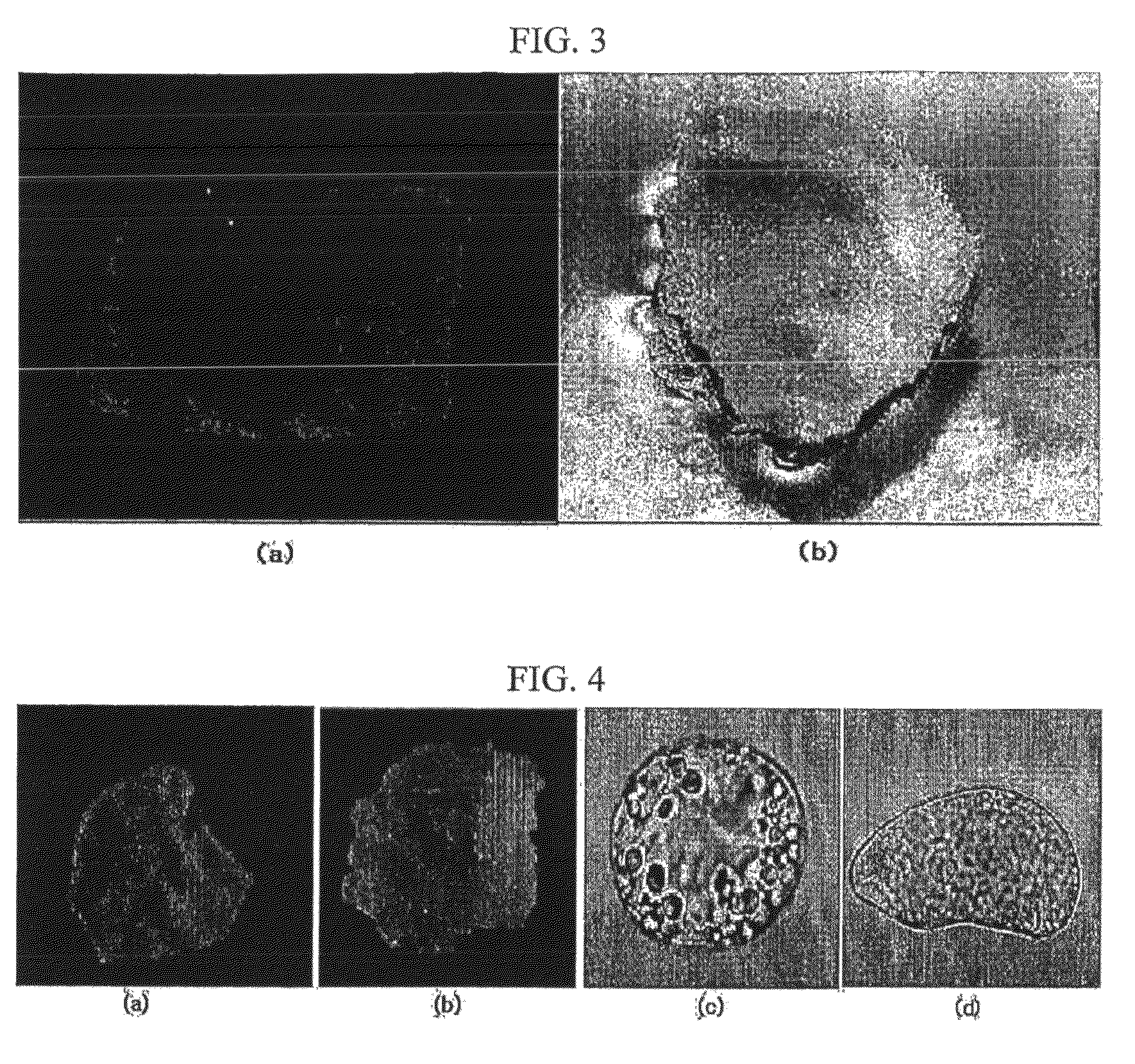Plant stem cell line derived from cambium of herbaceous plant with storage root and method for isolating the same
a technology of herbaceous plants and stem cells, which is applied in the field of homogeneous cell lines derived from the cambium of herbaceous plants having storage roots, can solve the problems of removing microorganisms, requiring a lot of manpower and cost, and requiring a large amount of manpower and cost, and achieves the effect of stably proliferating during cultur
- Summary
- Abstract
- Description
- Claims
- Application Information
AI Technical Summary
Benefits of technology
Problems solved by technology
Method used
Image
Examples
example 1
Isolation of Cell Line Derived from Cambium of Herbaceous Plant Having Storage Root: (1)-Ginseng
1-1: Preparation of Plant Material
[0066]FIG. 1 shows the typical feature of an outdoor-cultivated ginseng used in the present invention. As shown in FIG. 1, only ginseng, which was smooth and had no wound, was selected and collected. The collected ginseng was washed under running tap water to remove soil or other contaminants from the outer surface of the ginseng. Then, the fine roots of the ginseng were all removed to leave only the main root, and the surface of the main root was washed with a liquid detergent, and then the main root was left to stand under running tap water. The washed tissue was placed in a sterilized flask in a clean bench and sterilized with 70% ethanol for about 30 seconds to 1 minute. Then, the tissue was rinsed with sterile distilled water, and then disinfected with 1-1.5% sodium hypochlorite (Junsei, Japan) for 5-8 minutes. Then, the disinfectant solution was dis...
example 2
Induction and Proliferation of Cell Line Derived from Cambium of Herbaceous Plant Having Storage Root: (2)-True Wild Ginseng
2-1: Induction of Cell Line Derived from Cambium of True Wild Ginseng
[0085]True wild ginseng was prepared and surface-sterilized in the same manner as in Example 1-1. Also, a 100-year-old true wild ginseng adventitious root maintained in a bioreactor was prepared and placed in a sterilized dish containing the CS solution of Table 2, and a cambium-containing explant was obtained from the true wild ginseng in the same manner as described above. Then, the two prepared samples were treated with osmotic stress in the same manner as in Example 1-2 and Example 1-3, and then homogeneous cell lines derived from the cambiums were induced.
[0086]As a result, it was observed that, in both the true wild ginseng cambium-containing explant and the true wild ginseng adventitious root cambium-containing explant, which have been treated with osmotic stress, osmotic stress-removed...
example 3
Induction and Proliferation of Cell Line Derived from Cambium of Herbaceous Plant Having Storage Root: (3)-Carrot
[0089]A carrot (Daucus carota L.) was prepared and surface-sterilized in the same manner as in Example 1-1. Then, the prepared sample was treated with osmotic stress in the same manner as in Example 1-2 and Example 1-3, and then a cambium-derived cell line was induced from the carrot.
[0090]As a result, in the same manner as in Examples 1 and 2, it was observed that tissues other the cambium were necrotized and that the cambium-derived homogeneous cell line having the ability to divide was induced. FIG. 6 shows that the cambium-derived homogeneous cell line having the ability to divide was induced in the carrot.
[0091]Also, other plant hormone auxins, including IAA, IBA, picloram, 2,4-D, CPA and NAA, were used at the same concentration to examine the influence of the hormone used in induction medium. Table 8 shows results obtained when various kinds of auxins were used in t...
PUM
 Login to View More
Login to View More Abstract
Description
Claims
Application Information
 Login to View More
Login to View More - R&D
- Intellectual Property
- Life Sciences
- Materials
- Tech Scout
- Unparalleled Data Quality
- Higher Quality Content
- 60% Fewer Hallucinations
Browse by: Latest US Patents, China's latest patents, Technical Efficacy Thesaurus, Application Domain, Technology Topic, Popular Technical Reports.
© 2025 PatSnap. All rights reserved.Legal|Privacy policy|Modern Slavery Act Transparency Statement|Sitemap|About US| Contact US: help@patsnap.com



